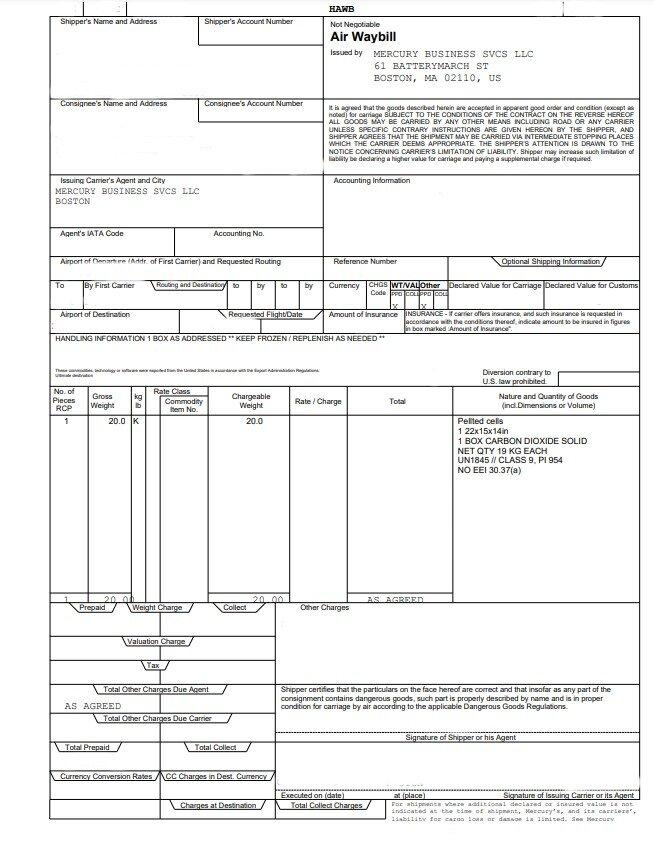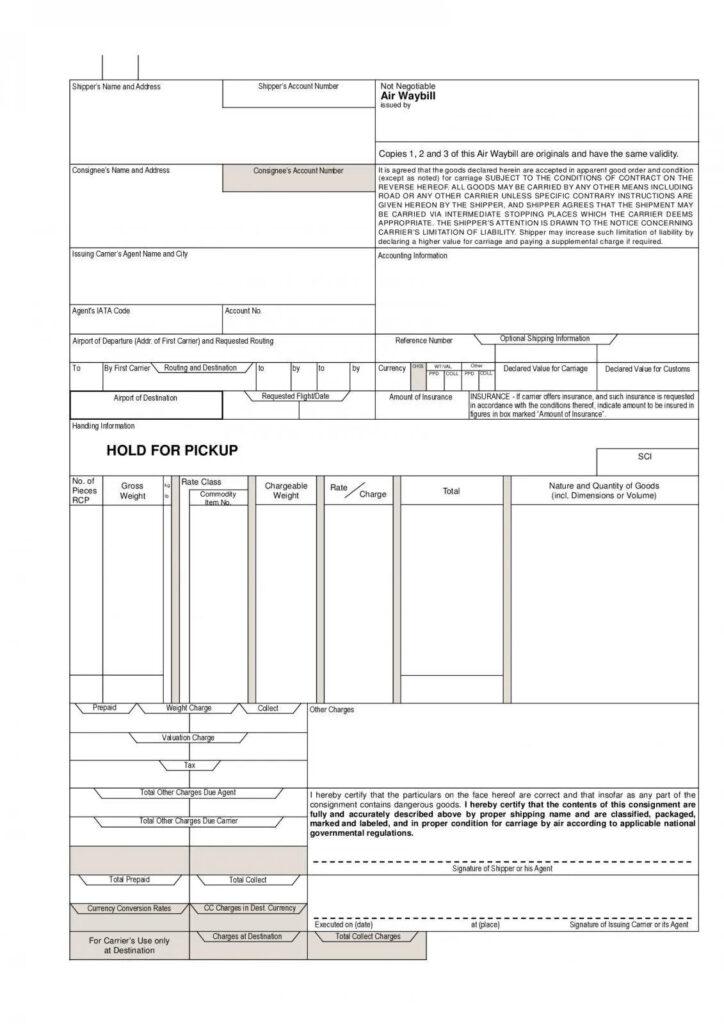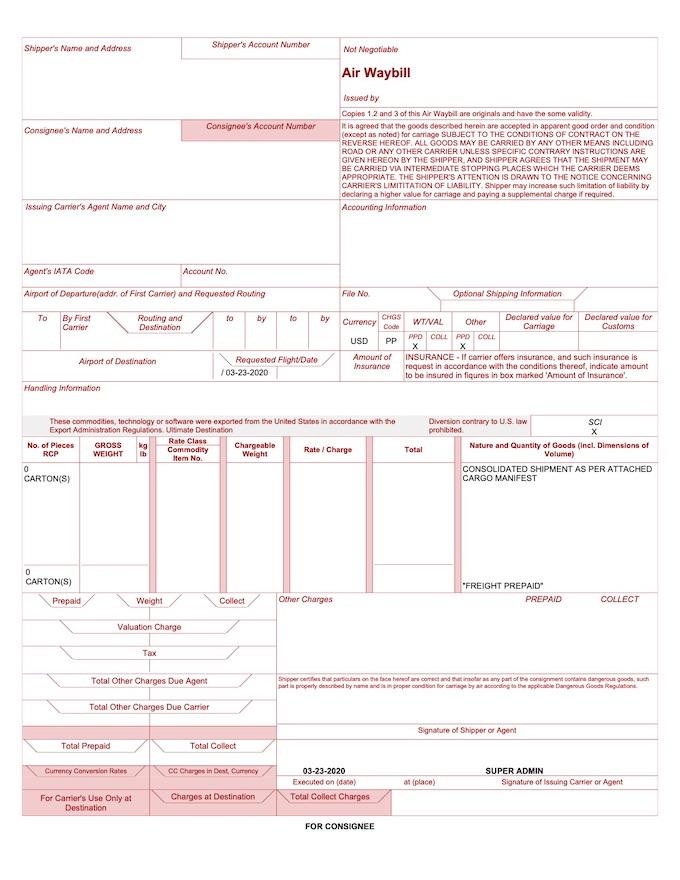In the intricate world of international shipping, the Master Air Waybill (MAWB) is a vital document that serves as the guiding light for logistics and transport operations. As goods journey across continents and oceans, the MAWB ensures a seamless and organized flow of cargo, connecting suppliers to buyers with precision and efficiency. Join us as we delve into the intricacies of MAWB logistics and discover the key role it plays in the global shipping industry.
Key Elements of a Master Air Waybill (MAWB)
When it comes to the Master Air Waybill (MAWB), there are several key elements that are essential for smooth logistics, transport, and shipping processes. Understanding these elements is crucial for ensuring that goods are transported efficiently and accurately.
- Shipper Information: This includes the name and address of the party shipping the goods. It is important for accurate documentation and tracking.
- Consignee Information: This includes the name and address of the party receiving the goods. It is crucial for proper delivery.
- Description of Goods: This includes details about the goods being transported, such as quantity, weight, dimensions, and any special handling requirements.
Additionally, other key elements of a Master Air Waybill (MAWB) include:
- Flight Details: Information about the flight(s) that will transport the goods, including flight numbers, departure and arrival airports, and scheduled times.
- Declaration of Value: This is the declared value of the goods being shipped, which is important for insurance and liability purposes.
- Special Instructions: Any special instructions for handling the goods, such as temperature requirements or fragile handling.

Enhancing Logistics Efficiency through MAWB Implementation
Implementing the Master Air Waybill (MAWB) can significantly enhance the efficiency of logistics operations by streamlining the documentation process and ensuring accurate tracking of shipments. By utilizing a standardized MAWB format, companies can reduce errors and delays in the transportation of goods, leading to improved supply chain management and customer satisfaction.
With the implementation of MAWB, logistics providers can easily consolidate multiple shipments into a single document, simplifying the handling and tracking of goods throughout the transportation process. This not only reduces paperwork and administrative burden but also enhances visibility and transparency in shipping operations. By harnessing the power of technology and standardized documentation, companies can achieve greater efficiency and reliability in their logistics processes, ultimately driving business growth and success.

Navigating the Complexities of MAWB in Shipping Operations
Master Air Waybill (MAWB) is a crucial document in the world of shipping operations. It serves as the main contract of carriage between the shipper and the airline, outlining the terms and conditions of transportation. Navigating the complexities of MAWB can be daunting, but with a clear understanding of its key components and requirements, you can ensure smooth logistics, transport, and shipping processes.
When dealing with MAWB in shipping operations, it’s essential to pay attention to details such as:
- Shipper Information: Ensure accurate details of the shipper are included in the MAWB.
- Consignee Information: Double-check that the consignee’s details are accurate to prevent any delivery delays.
- Goods Description: Clearly describe the goods being transported to avoid any confusion or disputes.
- Flight Details: Make sure the flight information is correct to track the shipment effectively.

Best Practices for MAWB Documentation and Management
One crucial aspect of managing Master Air Waybill (MAWB) documentation is ensuring accuracy and completeness. This involves meticulously checking all information provided on the MAWB, such as shipper and consignee details, weight and dimensions of the cargo, and any special handling instructions. By double-checking these details before finalizing the MAWB, you can prevent potential errors that could lead to delays or issues during transportation.
Another best practice for MAWB management is maintaining organized records of all MAWBs generated for each shipment. This includes keeping track of MAWB numbers, date of issuance, and any changes or updates made to the MAWB throughout the transportation process. Having a systematic approach to managing MAWB documentation can help streamline logistics operations and ensure smooth communication with all parties involved in the shipping process. By following these best practices, companies can enhance efficiency and accuracy in their MAWB management processes.
Wrapping Up
In conclusion, mastering the art of the Master Air Waybill (MAWB) is essential in navigating the complex world of logistics, transport, and shipping. By understanding the importance and intricacies of this document, businesses can ensure the smooth and efficient movement of their goods across the globe. So next time you think about shipping goods, remember the MAWB is your key to success in the world of international trade. Master it, and watch your business take flight.
